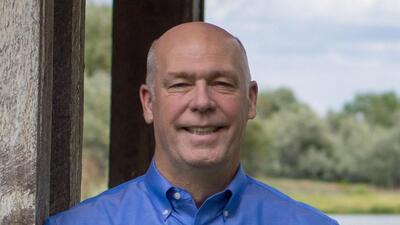The Science Speaks blog series offers a deep dive into science, technology, and innovation topics on the minds of the public. The series explains focal topics through relatable analogies and asks readers to consider key opportunities, explore avenues for advancing gender equity and equality, and answer the ultimate question: Why should we care?
In Field of Dreams, one of America’s most iconic sports films, ghostly visitors help struggling corn farmer Ray Kinsella save his family business while reviving a great American pastime. This involves transforming acres of his remote Iowa cornfields into a baseball stadium. But I would propose that a more straightforward, less paranormal-dependent way to secure the farm’s future would have involved Ray implementing agroforestry.
Agroforestry is a land management system that integrates crops and livestock with trees and shrubs. In many parts of the world, agroforestry is an important contributor to the food, nutrition, and income of rural farmers like Ray. But it’s also becoming increasingly significant in broader agricultural contexts due to its climate change mitigation potential. Globally, women are less likely to benefit from agroforestry due to lack of land ownership and exclusion from land management decisions. But we know that integrating women into agroforestry programs is beneficial for everyone—our planet included.
Techniques in agroforestry are wide-ranging and tailored to a farm’s location. While agroforestry does not advocate interspersing crops and sports fields, it can involve alternating rows of planted crops and trees in a process called alley cropping. Another option, forest farming, grows crops beneath shady forest canopies. Tree species are selected to provide marketable products, resulting in income diversification for the farmer. For Ray, this diversification is based on corn and baseball tickets, while agroforesters explore combinations of food and forest products. When women are excluded from planning, timber trees (typically tended by men) are often selected over fruit- or nut-bearing varietals (more often tended by women and providing immediate sustenance for families).
Farmers with livestock may opt for silvopasture, whereby cattle, sheep, or other farm animals graze under trees. While producing marketable products for the farmer, the trees also offer shade, shelter, or nutrition for the animals. Other agroforestry options include riparian buffers (trees planted alongside waterways to filter runoff) and windbreaks (trees that slow wind gusts to protect crops). By happy accident, the bleachers at Ray’s baseball field might function as windbreaks for his corn.
All agroforestry practices promote soil stability. The roots of perennial trees and shrubs hold soil in place, preventing erosion from water, wind, and agricultural practices that disturb the earth. Agroforests also tend to exhibit greater biodiversity, including for birds, bats, and insect pollinators that provide ecosystem services. Plus, using agroforestry to grow multiple consumable products improves food security, especially on subsistence farms. Ecosystem services and food security are key motivators for women farmers, further supporting the need for women’s perspectives in decision-making about sustainable land use.
Just as Ray benefits financially from his stadium-building pursuits by the end of Field of Dreams, agroforestry can help farmers achieve economic security, especially if they select crop, shrub, and tree species that are harvested at different times of year. Moisture retention, soil nutrient enhancement, and micro-climate stabilization can boost overall yields and increase crop resiliency to climate change. This is especially significant for women farmers, whose limited access to credit, agricultural inputs, and extension services make them highly vulnerable to climate impacts. If developed using a gender-transformative approach, agroforestry may also provide new markets for tree products traditionally tended or collected by women and girls.
Indigenous communities have been implementing agroforestry techniques for centuries, providing the basis of local strategies around the world. In East Africa, for instance, it is increasingly common for commercial products like coffee and tea to be planted alongside fruit trees and medicinal plants. In Central America, an intricate layering system might result in tall (e.g., coconut, papaya) and short (e.g., banana, citrus) fruit trees, shrubs (e.g., coffee, cacao), annual crops (e.g., maize), and groundcover (e.g., squash) living in tandem.
Providing training in agroforestry will help overcome current challenges, which include underdeveloped markets for perennial crops and lack of expertise. Plus, just as Ray faced financial hurdles building his baseball field, initial investment costs can also slow agroforestry implementation, since financial benefits accumulate as trees flourish over time.
As outlined in the Global Food Security Strategy (2022-2026) , the U.S. Government recognizes the important role of agroforestry in establishing climate-resilient food systems. Partnerships are being developed with corporations that practice sustainable agriculture, while programs are scaling up agroforestry adoption in locations ranging from Haiti to Indonesia to Mali . Domestically , technical assistance is being provided to landowners interested in implementing agroforestry on their own farms.
Nowadays, there are better ways to support farms than building a baseball field where crops and trees could grow. What benefits could agroforestry offer your community?
About the Author: Aubrey R. Paris, Ph.D., is a contracted Gender, Climate & Innovation Policy Advisor in the Secretary’s Office of Global Women’s Issues (S/GWI). Dr. Paris received her Ph.D. in Chemistry and Materials Science from Princeton University and B.S. in Chemistry and Biology from Ursinus College.
Original source can be found here.








